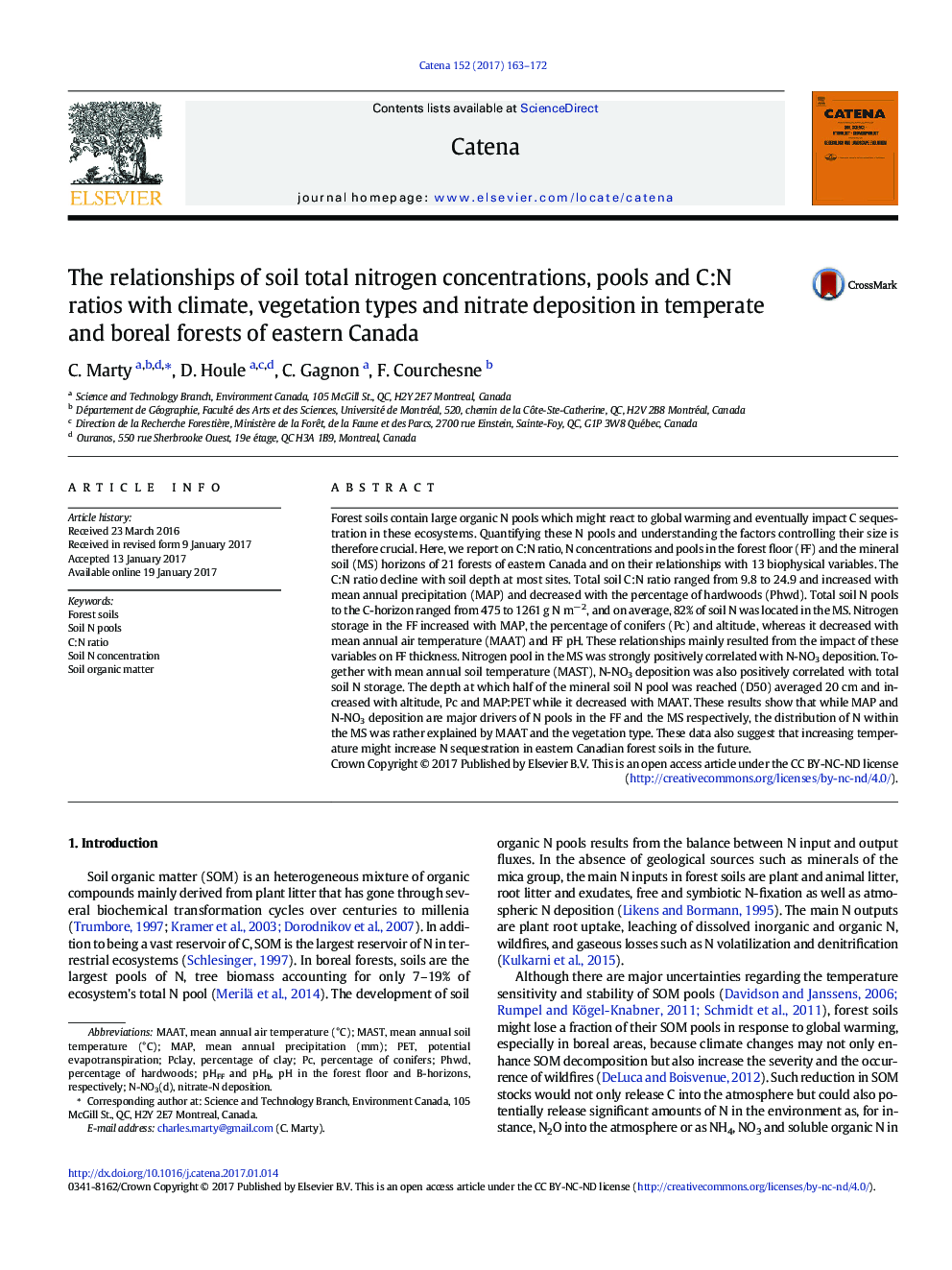| کد مقاله | کد نشریه | سال انتشار | مقاله انگلیسی | نسخه تمام متن |
|---|---|---|---|---|
| 5769956 | 1629202 | 2017 | 10 صفحه PDF | دانلود رایگان |

- Soil N pools ranged from 475 to 1261 g N mâ 2 across 21 forests of eastern Canada.
- 82% of total soil N was located in the mineral soil.
- N stocks in the forest floor increased with precipitation.
- N stocks in the mineral soil increased with NO3 deposition.
- N distribution within the mineral soil was controlled by the vegetation type.
Forest soils contain large organic N pools which might react to global warming and eventually impact C sequestration in these ecosystems. Quantifying these N pools and understanding the factors controlling their size is therefore crucial. Here, we report on C:N ratio, N concentrations and pools in the forest floor (FF) and the mineral soil (MS) horizons of 21 forests of eastern Canada and on their relationships with 13 biophysical variables. The C:N ratio decline with soil depth at most sites. Total soil C:N ratio ranged from 9.8 to 24.9 and increased with mean annual precipitation (MAP) and decreased with the percentage of hardwoods (Phwd). Total soil N pools to the C-horizon ranged from 475 to 1261 g N mâ 2, and on average, 82% of soil N was located in the MS. Nitrogen storage in the FF increased with MAP, the percentage of conifers (Pc) and altitude, whereas it decreased with mean annual air temperature (MAAT) and FF pH. These relationships mainly resulted from the impact of these variables on FF thickness. Nitrogen pool in the MS was strongly positively correlated with N-NO3 deposition. Together with mean annual soil temperature (MAST), N-NO3 deposition was also positively correlated with total soil N storage. The depth at which half of the mineral soil N pool was reached (D50) averaged 20 cm and increased with altitude, Pc and MAP:PET while it decreased with MAAT. These results show that while MAP and N-NO3 deposition are major drivers of N pools in the FF and the MS respectively, the distribution of N within the MS was rather explained by MAAT and the vegetation type. These data also suggest that increasing temperature might increase N sequestration in eastern Canadian forest soils in the future.
Journal: CATENA - Volume 152, May 2017, Pages 163-172